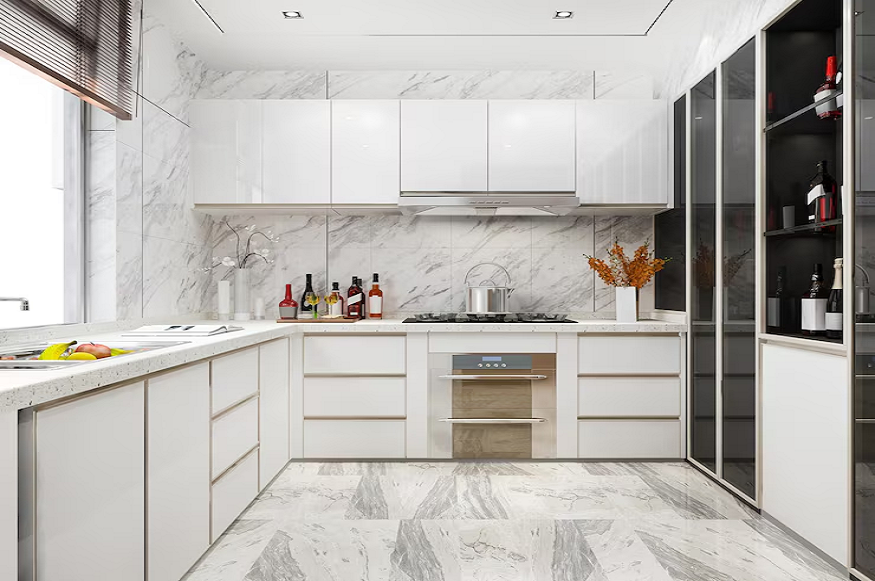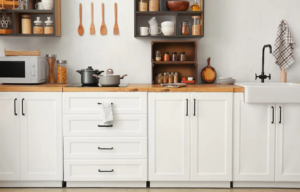Family-Friendly Kitchen Design Tips for Busy Households

The heart of every home lies in the kitchen. It’s where meals are prepped, homework is completed, and daily life unfolds. For busy households, especially those with kids, having a family-friendly kitchen design is not a luxury—it’s a necessity. A well-designed kitchen can boost functionality, safety, and comfort, all while saving precious time during hectic mornings or dinner rushes.
If you’re planning a kitchen renovation or looking to optimize your current setup, here are expert-approved tips to create a family-oriented space that balances aesthetics and efficiency.
1.Prioritize Open Layouts for Better Flow
In recent years, open-concept kitchen designs have skyrocketed in popularity. According to a 2024 Houzz survey, 61% of homeowners opted for open layouts in their kitchen remodels. Why? Open kitchens eliminate barriers between the cooking and living areas, making supervising children, socializing with guests, or multitasking easier.
For busy families, an open layout allows for more effortless movement and sightlines whether you’re helping your child with homework while cooking or keeping an eye on toddlers playing nearby.
2.Choose Durable, Easy-to-Clean Materials
When life gets messy—and it will—your kitchen surfaces need to withstand the chaos. Quartz countertops, for example, are beautiful but also non-porous and stain-resistant. Similarly, ceramic or porcelain tile floors are ideal for high-traffic areas and are much easier to clean than hardwood.
Consider matte or semi-gloss cabinetry finishes that hide fingerprints and smudges. Touchless faucets and smudge-proof stainless steel appliances might also benefit families with young children.
3. Smart Storage Solutions are Key
Clutter is the enemy of efficiency in any kitchen. Strategic storage solutions can make a massive difference in family households.
You can also assign specific zones for snacks, lunch-making supplies, or kid-friendly utensils—making it easy for little ones to access their essentials without creating a mess. Bonus tip: Labeling drawers and containers helps keep everyone on the same page, even during a morning rush.
4. Incorporate Kid-Friendly Features
Consider including a lower cabinet or drawer with safe, age-appropriate utensils, dishes, and snacks.
Adding a kitchen island with seating also encourages kids to join in on meal prep or homework while you cook. According to the National Kitchen & Bath Association (NKBA), 47% of families now prioritize multi-functional islands during remodels.
For an added touch of fun and practicality, install a chalkboard or whiteboard wall where you can leave reminders, grocery lists, or fun messages for the kids.
5.Safety First: Make Your Kitchen Child-Proof
A functional kitchen must also be safe, especially for families with toddlers. Invest in soft-close cabinets and drawers to prevent finger injuries, and use safety locks for drawers containing sharp tools or cleaning supplies.
Position your microwave above the counter but below eye level to keep it accessible to older children while remaining out of reach for little ones. Rounded countertop edges and slip-resistant flooring are also minor changes that go a long way in preventing accidents.
6.Add Efficient Lighting for Every Task
Busy kitchens need lighting that does more than brighten the room. A well-lit kitchen design combines ambient, task, and accent lighting. Pendant lights over islands or breakfast bars provide focused illumination, while under-cabinet lighting helps during meal prep or cleanup.
According to the U.S. Department of Energy, LED lighting is energy-efficient and can reduce energy costs by up to 75% compared to incandescent options.
7. Designate a Family Command Center
Busy households benefit from having a central hub in the kitchen for organizing daily life. Keep this area near the fridge or a side wall so it doesn’t interfere with cooking zones.
Not only does it help with coordination, but it also reduces the stress of forgetting appointments or misplacing essential notes.
8. Opt for Flexible Seating Options
From casual breakfasts to holiday gatherings, seating needs can vary daily. A combination of bar stools, bench seating, and expandable dining tables ensures everyone has a place, no matter the occasion.
Built-in breakfast nooks are especially great for families. They offer a cozy, space-saving alternative to traditional dining tables and can even include hidden storage underneath the benches.
Final Thoughts
From smart storage and safe materials to open layouts and kid-centric features, a thoughtfully designed kitchen can bring harmony and efficiency to even the busiest households.
Investing in a functional, welcoming, and well-organized space means you’re not just designing a kitchenyou’re building a place where memories are made daily.







